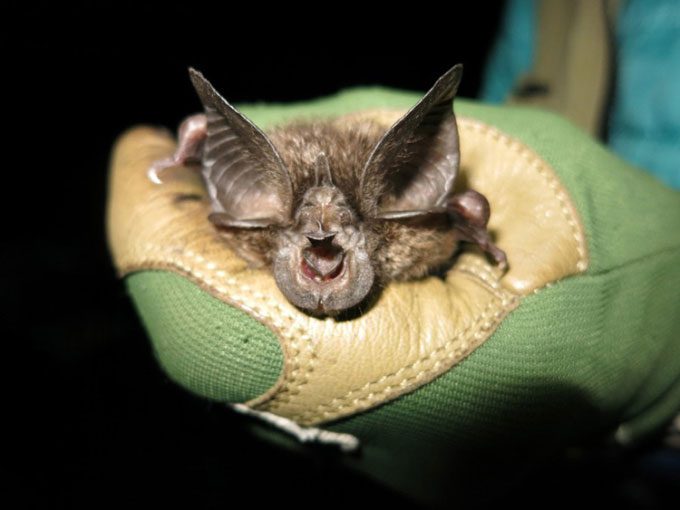Conservationists recently confirmed that the Hill’s Horseshoe Bat species still exists in Rwanda’s dense Nyungwe rainforest.
For the past 40 years, there have been no observations of the Hill’s Horseshoe Bat (Rhinolophus hilli) worldwide, leading the International Union for Conservation of Nature (IUCN) to classify them as “critically endangered” in the Red List. Many scientists even believed that they might have completely vanished from Earth.

A Hill’s Horseshoe Bat found in Nyungwe forest in 2019. (Photo: EPA PIC)
“We are the first to see this bat species after such a long time. It’s unbelievable!” Jon Flanders, Director of the Bat Conservation International (BCI), joyfully confirmed in a statement on March 8.
The Texas-based nonprofit collaborated with the Rwanda Development Board and the Rwanda Wildlife Conservation Association to conduct surveys in the forest starting in 2013. By 2019, after a 10-day expedition scouring the caves in the forest, they encountered a bat that closely resembled what they were searching for.
“We immediately recognized it was very special and noteworthy,” expedition leader Winifred Frick at BCI recounted. “The features on the creature’s face were exaggerated to a humorous degree.”
However, Frick and her colleagues needed three more years to gather sufficient information and verify the species.
From the tiny 2-gram Bumblebee Bat to the giant fruit bat with a wingspan of 1.5 meters, bats account for one-fifth of all terrestrial mammals. Among the 1,321 species assessed in the IUCN Red List, up to 40% are classified as endangered. Human activities such as deforestation are the main threats.
For researchers in Rwanda, this new discovery marks the beginning of a conservation race. “Now, we need to figure out how to protect this species in the long term,” Flanders emphasized.


















































